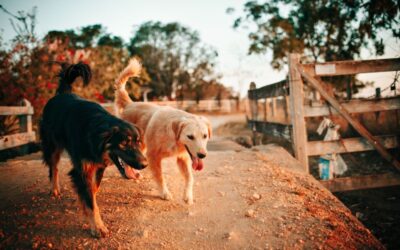Dog lips are jagged primarily to help with food processing. This irregular shape aids in gripping and tearing meat.
Understanding the physical traits of animals, such as the jagged lips of dogs, offers insights into their evolutionary adaptations and behaviors. Dogs, as descendants of wild carnivores, have retained certain characteristics that were crucial for survival in the wild. The textured edges of their lips are practical features, reflecting the canine need for efficient consumption of prey.
Enthusiasts and pet owners often marvel at the functional anatomy of dogs, which includes various features that facilitate their carnivorous diet, such as sharp teeth and strong jaws. Discussing these traits sheds light on the fascinating biological designs that equip animals for their specific lifestyles and diets, turning the seemingly small detail of a dog’s jagged lips into a topic of broader interest concerning their natural history and evolution.
The Evolutionary Tale
The jagged edges of dog lips serve critical functions, evolving over time. These rough textures enable dogs to protect their mouths and better process food. Their wild counterparts, such as wolves, showcase similar attributes. This points to a shared adaptation strategy for survival, which has been well preserved.
Effective food management, from gripping to tearing, is vital for canine survival. The jagged lip design helps achieve this. They also guard against potential mouth injuries. This is crucial for wild dogs who often deal with tougher prey. Thus, the shape and texture of canine lips are no accident. They are a direct result of evolutionary pressures.
Anatomy Of Dog Lips
The physical structure of dog lips is unique. Dog lips are not smooth like ours. They have rough, irregular edges, which might seem odd. These jagged edges play crucial roles for dogs. Their lips help hold food and water while eating and drinking.
Let’s explore these functions more closely. These ragged lip edges are not by chance. They help keep sensitive areas away from harm. For example, these edges protect the dog’s mouth and face from injuries.
| Function | Description |
|---|---|
| Holding Food | Jagged edges trap and hold food for better processing. |
| Water Intake | Improves drinking by helping dogs lap up water effectively. |
| Protection | Keeps sensitive inner mouth and facial skin safe from cuts. |
| Sensory Feedback | Provides tactile feedback to the dog about its environment. |
Communication And Expressions
Dogs use their lips to show feelings. The jagged edge of a dog’s lips can create various expressions. Tail wags and lip movements go together. These cues help other dogs understand what’s happening.
A relaxed dog might have smooth lip movements. A scared or aggressive dog shows sharp, quick lip movements. You can often tell how a dog feels by watching its lips. Trust is key for a dog to show a relaxed lip. All owners must learn these signs for better friendship.
Jagged Lips In Action
Dog lips play a crucial role in how a dog eats. The jagged edges help in gripping food firmly. Dogs can easily pick up various types of food.
Their unique lip texture also aids in keeping food inside their mouths. This design lets them chew well. Good chewing means digestion starts right.
Dogs interact with their world using their mouths. Jagged lips help them explore textures and objects. They feel different shapes and materials. This keeps them safe from harmful things.
Lips protect their teeth from injuries as well. Dogs use lips to carry objects. But, they do so without damaging sensitive gums and teeth.
Health And Hygiene Of Dog Lips
Dog lips can show various health issues. Signs of infection or irritation may appear. Regular check-ups are important. Owners should ensure cleanliness for their pet’s lips. It’s crucial to prevent serious illnesses.
Veterinary advice helps maintain lip health. Common concerns include chapped lips, cuts, and parasitic infestations. Immediate care can protect dogs from discomfort. A vet can provide safe treatments and care tips. Owners must know proper hygiene practices for their dogs’ lips.
Observations From Breeds
Dog breeds show a wide variety in lip textures. Some lips are smooth; others are noticeably jagged. Let’s take a closer look.
| Breed | Lip Texture |
|---|---|
| Labrador Retriever | Mostly smooth with slight jaggedness |
| Boxer | Visibly jagged and rough |
| Poodle | Generally smooth |
| Bulldog | Wrinkly with jagged edges |
Breeds with jagged lips often use them to hold food. This can be seen in hunting dogs, like the Labrador. Meanwhile, the Boxer, a breed with a strong jaw, shows more jaggedness. Each breed has lip structures that help with their daily activities.
Frequently Asked Questions Of Why Are Dog Lips Jagged
Why Do Dogs Have Jagged Lips?
Dogs have jagged lips primarily for functional purposes. The uneven texture helps channel saliva back into the mouth, aiding in hydration and digestion. Additionally, the jagged edges can trap scents, enhancing their sense of smell.
Are Dog Lips Designed For Better Scent Detection?
Yes, the jagged design of dog lips helps to trap scent particles. This structure, along with their moist noses, improves their already exceptional olfactory abilities, making dogs excellent at tracking smells.
Do Jagged Lips Help Dogs Drink Water?
Jagged lips are indeed beneficial when dogs drink water. The irregular edges allow dogs to lap up water efficiently, directing the liquid into their mouths rather than spilling it, which aids in quenching their thirst effectively.
Can The Texture Of A Dog’s Lips Indicate Health?
The texture and appearance of a dog’s lips can be indicators of health. Smooth, consistent texture without cracks or sores generally signifies good health, while changes may suggest a need for a veterinary check-up.
Conclusion
Understanding the unique structure of dog lips offers us a glimpse into their adaptability and evolutionary success. Our canine companions have evolved with practical features, down to the smallest parts. Their jagged lips serve a purpose, aiding in sensory navigation and protection.
As dog lovers delve deeper, the marvels of nature’s design become ever more fascinating, revealing the intricate details that make our furry friends so well-suited for their environments.



